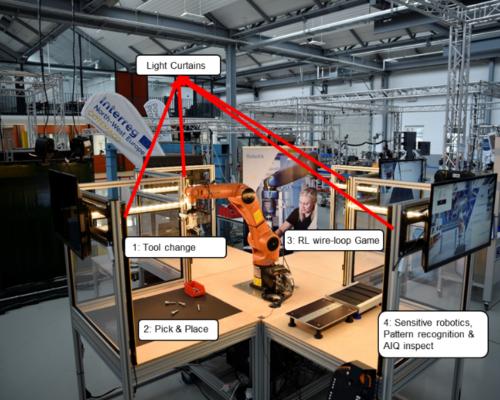
Problem
A safe environment for interaction and cooperation with humans usually has conventional separating protective devices.
Objectives
To develop a safe environment without separating guards with sensor systems that monitor workstations and demonstrate synchronized human-robot collaboration. A number of objects will be trained for pick and place applications.
Approach
To make the system as safe as possible, light curtains, laser scanners and a safety mat will be used. The light curtains will be used in work areas 1 and 2 to ensure that no one interferes with the robot during operation. The laser scanners protect work areas 3 and 4 by projecting 2 different laser fields. The first field is a warning field, the second is the protective shield field.
Pick and place:
The objective is to detect finished assembled workpieces and place them in a designated container for finished products. The worker does the assembly, the robot does the sorting whenever it has the opportunity. The robot’s initial position is defined to cover the entire work area.
Based on any set of objects in the camera’s field of view and the robot’s range, target objects are identified relative to the rest of the objects. The pose vectors (position and orientation) are then transformed into the robot’s coordinate system to identify the pose that the gripper must assume to properly grasp the object.
Areas of Application
This technology is primarily used when performing pick-and-place tasks in a safe environment without conventional separating protective devices.

